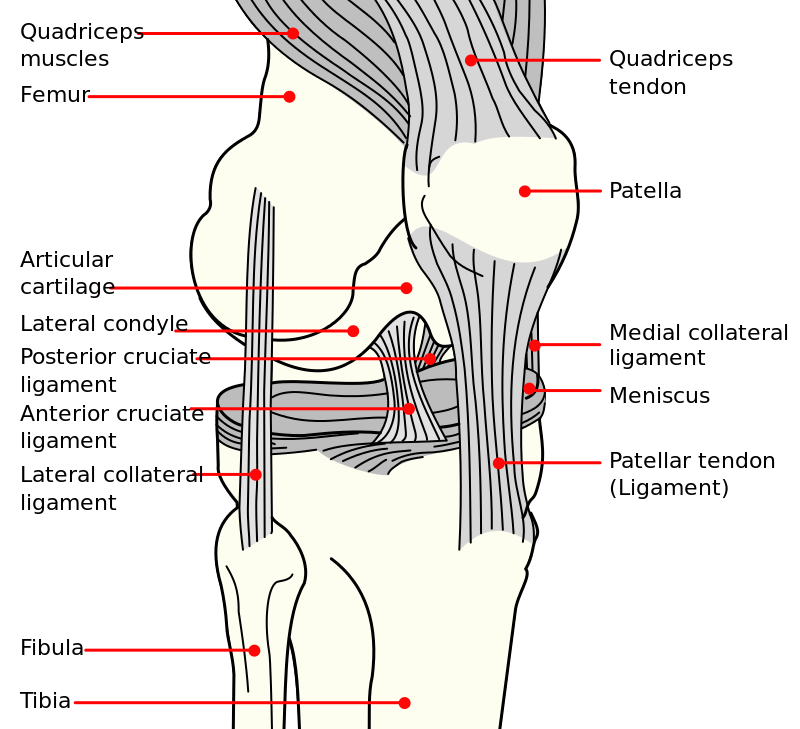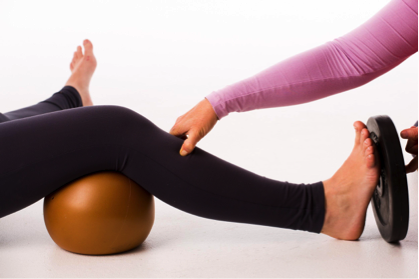Physiotherapy treatment for ACL injuries
Sat,Jun 03, 2017 at 01:22PM by Douglas Wilson
Anterior cruciate ligament (ACL) injuries are one of the most common knee injuries experienced by active Australians. News of a torn ACL is especially devastating for active individuals, especially if they are training for a big event. Professional physiotherapy treatment for ACL injuries can you achieve a faster, more effective and longer lasting recovery.
How can physiotherapy assist people with ACL injuries?
Post-op physio treatment and rehabilitation can facilitate sufferers to return to sport at the earliest possible time (between 9 to 12 months), as well as providing ongoing support throughout the ‘return to sport’ phase in order to minimise chances of re-injury. Over the following paragraphs I will outline some of the steps, questions and decisions patients may face if they have suffered an ACL tear and what to expect in terms of movement restrictions post-op.
What are the symptoms of an ACL injury?
The anterior cruciate ligament lives deep within the knee joint running from the back of the groove between the femoral condyles to the front of the tibia and functions to limit the forward movement of the tibia (lower leg bone) on the femur (upper leg bone) as well as tibial rotation in both directions. ACL injuries can typically occur in non-contact situations such as stepping, jumping or landing for example and are often accompanied by an audible pop. Other clinical signs and symptoms can include repeated giving way during everyday tasks, significant pain, tenderness, muscle spasm and restricted range of motion. An MRI to confirm the diagnosis and consult with an orthopaedic surgeon will often follow. At this point a patient with a complete ACL tear will be presented with information about surgery and naturally a number of questions as a result.
Steps taken for ACL injury prior to surgery
Prior to any surgery there are a few things a candidate for this surgery needs to work on to ensure the best surgical outcome. Before surgery is performed ideally there should be minimal swelling with ability to straighten the injured leg and maintain this range while doing a straight leg raise. If these objectives can be achieved then the chances of returning to full ranges of motion are maximised.
Associated complications of ACL injury
It is important to mention at this point the consequences of suffering a meniscal tear (commonly referred to as cartilage) or chondral damage (bone that forms the joint surface) along with the ACL tear. Post op management with these injuries repaired may vary slightly as opposed to an ACL tear in isolation. If faced with the prospect of a meniscal repair as well as an ACL reconstruction a common movement restriction will be weight bearing limited to 45 degrees maximum in the first 4 weeks then maximum 90 degrees flexion for another 4 weeks in order to protect the healing meniscus. If all three are present and requiring surgical intervention (meniscal tear, chondral damage and ACL tear) then being non weight bearing with crutches for 6 to 8 weeks post op will be necessary to ensure adequate healing.
ACL reconstruction techniques
Depending on the surgeon the surgical technique used for ACL reconstruction may be either patella tendon autograft or hamstring autograft (often double bundled). Patella tendon autografts have been associated with post op patella tendon pain with quadriceps strengthening and knee pain when kneeling so hamstring autograft tends to be the more popular surgical option. A hamstring autograft is the tendon of the semitendinosus and gracillus (which are accessory hamstring and adductor muscles respectively) cut from the muscle and sutured together to form a bundle of 4 strands which essentially becomes your ACL ligament. These tendons once cut then regenerate over the next 12 weeks post op and it’s at this point in time hamstring strength work can begin in earnest. Over time the bundle is subjected to mechanical loads while acting as the ACL, its mechanical properties change to closely resemble a ligament.
What is the ideal time for physiotherapy treatment for ACL injuries?
Finally to conclude, it is important to commence physiotherapy as soon as possible post-surgery to minimise swelling and pain while also working to improve range of motion. A physio will also review the exercises prescribed by the surgeon just to make sure you are doing them safely and with correct technique. Rehabilitation post ACL reconstruction is without a doubt a long process but the sooner rehab is started the easier it becomes to meet the rehab milestones in the later stages, milestones that will determine the eventual date for return to sport.
Douglas Wilson is a senior physiotherapist with Body Organics in Brisbane. Doug is a big believer in hands-on treatment with special interests in Active Release Techniques, Muscle Energy Techniques, acupuncture and pilates for injury rehabilitation. He especially enjoys treating lower limb conditions as well as spinal pain and upper limb conditions such as shoulder impingement, tennis elbow and carpal tunnel.
References
W. Janssen, J. W. Orchard, T. R. Driscoll, W. Van Mechelen – High incidence and costs for anterior cruciate ligament reconstructions performed in Australia from 2003–2004 to 2007–2008: time for an anterior cruciate ligament register by Scandinavian model? – Scand J Med Sci Sports 2011
DOUGLAS ADAMS, DAVID LOGERSTEDT, AIRELLE HUNTER-GIORDANO,3 MICHAEL J. AXE, and LYNN SNYDER-MACKLER – Current Concepts for Anterior Cruciate Ligament Reconstruction: A Criterion–Based Rehabilitation Progression – J Orthop Sports Phys Ther. 2012; 42(7): 601–614.
Other blog: https://www.bodyorganics.com.au/pilates-exercises-knee-injuries/
 0
0 

